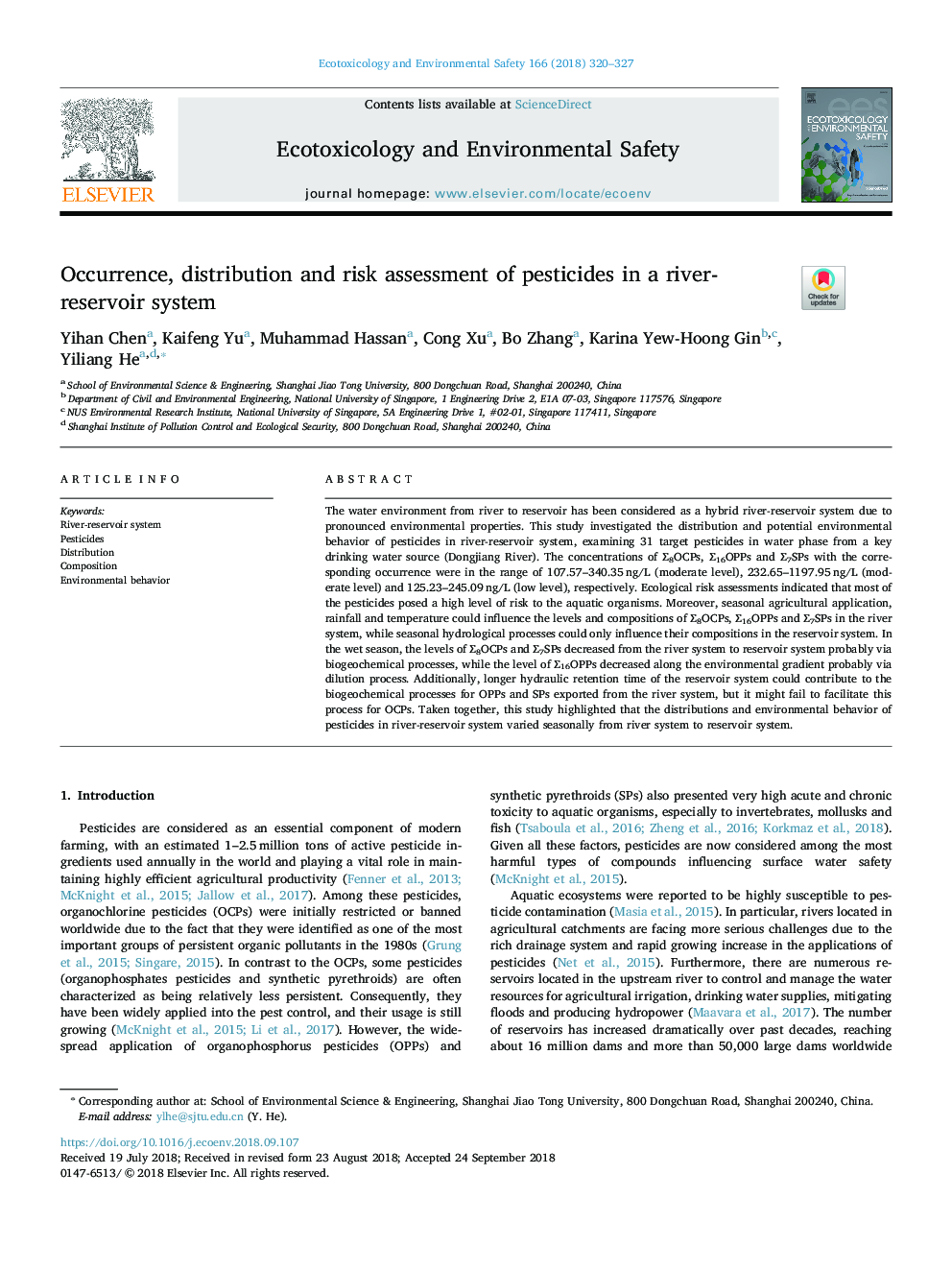| Article ID | Journal | Published Year | Pages | File Type |
|---|---|---|---|---|
| 11025111 | Ecotoxicology and Environmental Safety | 2018 | 8 Pages |
Abstract
The water environment from river to reservoir has been considered as a hybrid river-reservoir system due to pronounced environmental properties. This study investigated the distribution and potential environmental behavior of pesticides in river-reservoir system, examining 31 target pesticides in water phase from a key drinking water source (Dongjiang River). The concentrations of â8OCPs, â16OPPs and â7SPs with the corresponding occurrence were in the range of 107.57-340.35â¯ng/L (moderate level), 232.65-1197.95â¯ng/L (moderate level) and 125.23-245.09â¯ng/L (low level), respectively. Ecological risk assessments indicated that most of the pesticides posed a high level of risk to the aquatic organisms. Moreover, seasonal agricultural application, rainfall and temperature could influence the levels and compositions of â8OCPs, â16OPPs and â7SPs in the river system, while seasonal hydrological processes could only influence their compositions in the reservoir system. In the wet season, the levels of â8OCPs and â7SPs decreased from the river system to reservoir system probably via biogeochemical processes, while the level of â16OPPs decreased along the environmental gradient probably via dilution process. Additionally, longer hydraulic retention time of the reservoir system could contribute to the biogeochemical processes for OPPs and SPs exported from the river system, but it might fail to facilitate this process for OCPs. Taken together, this study highlighted that the distributions and environmental behavior of pesticides in river-reservoir system varied seasonally from river system to reservoir system.
Related Topics
Life Sciences
Environmental Science
Environmental Chemistry
Authors
Yihan Chen, Kaifeng Yu, Muhammad Hassan, Cong Xu, Bo Zhang, Karina Yew-Hoong Gin, Yiliang He,
